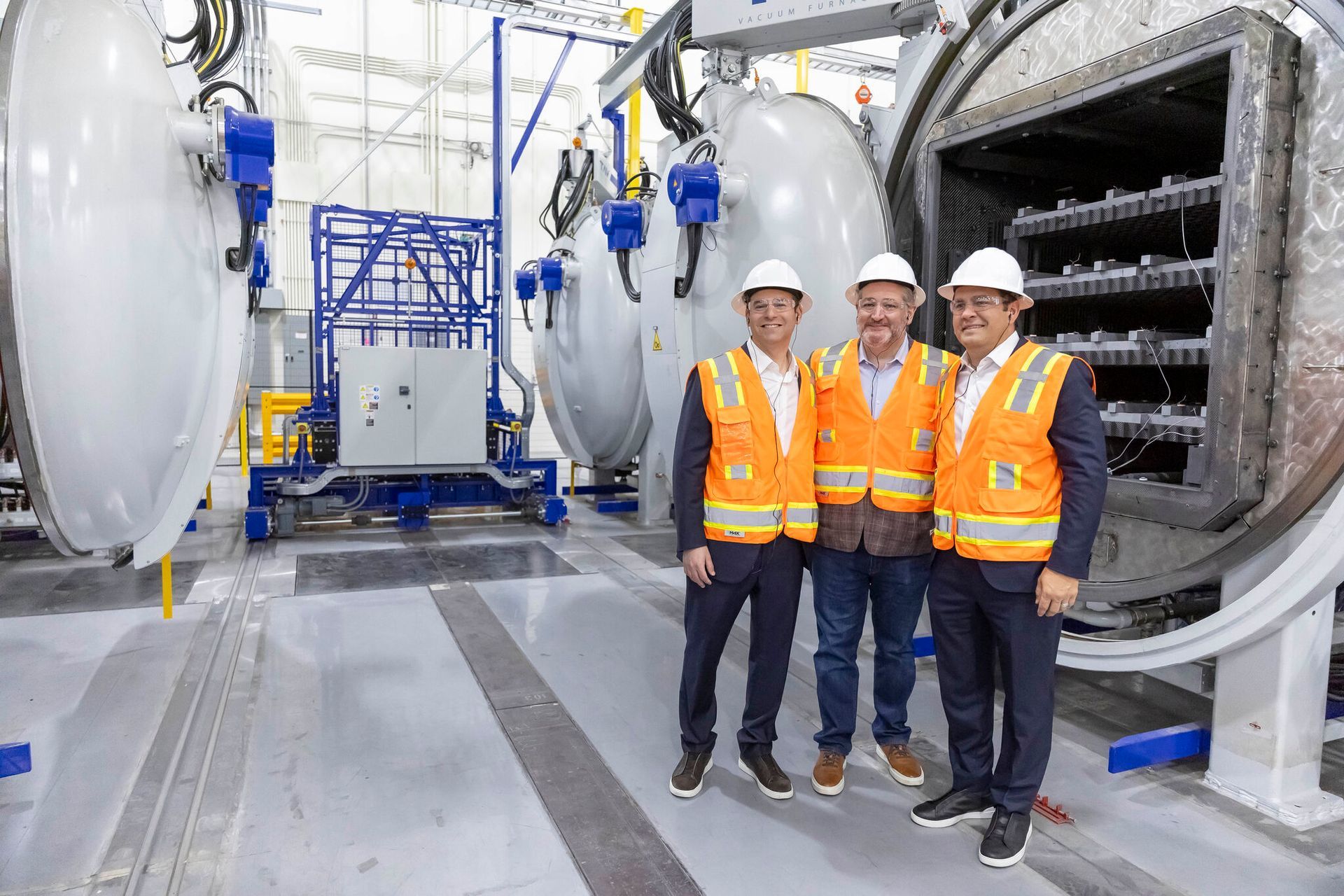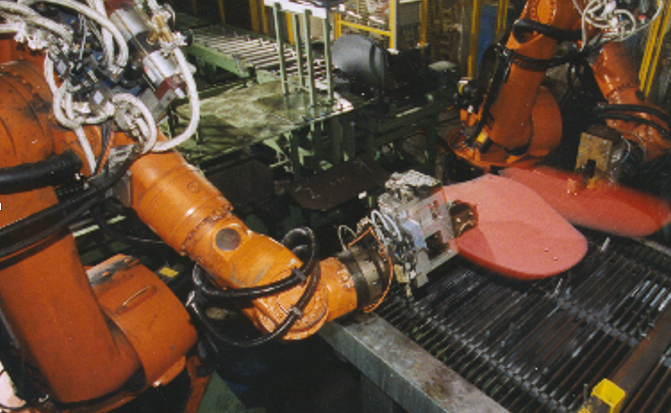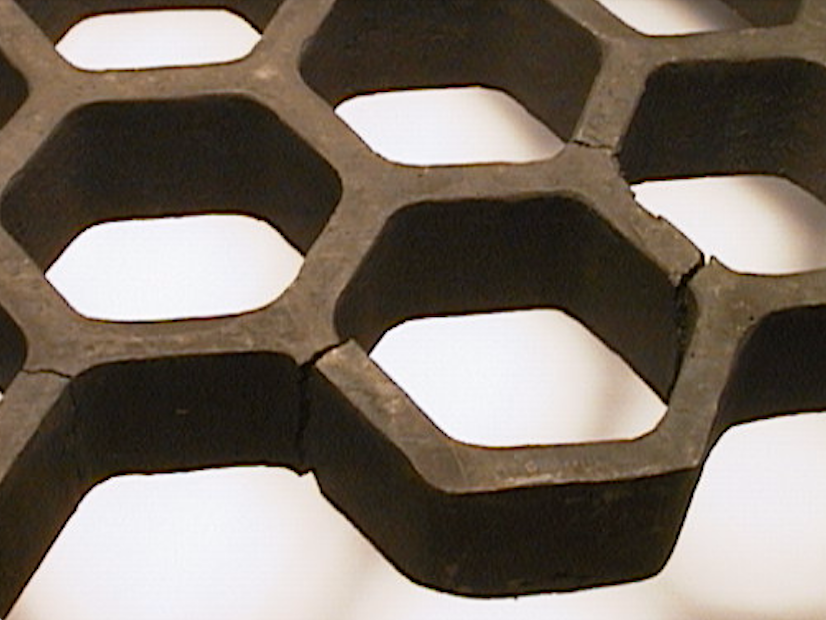Maximize Precision and Productivity with CFC Vacuum Furnace Racks
Joerg Demmel • May 13, 2025
Born from the demands of space exploration, Carbon Fiber Carbon (CFC) has found a powerful second life in the world of industrial heat treatment. This advanced material—capable of withstanding temperatures beyond 2,000°C—has become a game-changer for companies seeking to improve precision, reduce cycle times, and dramatically extend the lifespan of their fixtures.
Today, Vacuum Furnace Fixtures and Vacuum Furnace Racks made from CFC are setting new standards in performance. Whether in aerospace, automotive, or tooling industries, businesses are replacing outdated steel systems with custom CFC solutions that deliver unmatched efficiency and throughput. It’s not just an upgrade—it’s a transformation in how we approach high-temperature processing.
Table of Contents
- What Makes CFC Fixtures Game-Changing?
- Benefits of Our Custom Vacuum Furnace Racks
- Real-World Applications and Success Stories
- Boost Your Furnace Throughput—Up to 100%!
- FAQs About CFC Vacuum Furnace Fixtures
What Makes CFC Fixtures Game-Changing?
Let’s start with a powerful idea: what if the material that once survived re-entry from Earth’s orbit could now extend your furnace fixture's life and double your throughput?
CFC—Carbon Fiber Reinforced Carbon—originated in aerospace. Its strength under extreme conditions makes it the ideal material for
Vacuum Furnace Fixtures. Why? Because unlike steel or other alloys, CFC maintains its form and structural integrity even at temperatures above 2000°C.
Thanks to its low thermal mass and chemical inertness, you benefit from:
- Reduced cycle times
- Minimal contamination risks
- Consistent heat distribution
- Lighter fixture weight
- Energy efficiency
These aren't just upgrades; they’re transformational improvements.
Benefits of Our Custom Vacuum Furnace Racks
Not all racks are made equal—and we don’t do them off-the-shelf. At High Temperature Concept, every Vacuum Furnace Rack is custom-engineered to meet the exacting demands of your tools and components.
Here’s what you get:
Feature
- Precision CFC tray and rack design
- Lightweight structure
- Oil quenching compatibility
- Long service life
- Cleanroom-ready surfaces
Benefit
- Exact fit for complex geometries
- Easier handling and faster heating/cooling
- Suitable for harsh treatment environments
- Reduced downtime and replacement costs
- Ideal for aerospace and medical components
You don’t just get a fixture—you get peace of mind, throughput, and repeatable performance.
Real-World Applications and Success Stories
After more than 30 years in the user industry, we've helped many heat treatment shops across the U.S. and Europe optimize their furnace performance.
Take, for example, a leading tool manufacturer that switched to our custom Vacuum Furnace Racks for annealing and oil-quenching applications. Their results?
- Cycle time reduced by 35%
- Rack lifespan increased by 400%
- Furnace Throughput increased by 70%
- Fewer part deformations
As a result, they scaled up production and saved thousands annually.
This is the kind of transformation we’re proud to deliver with true German Engineering Quality, proudly Made in the USA.
Boost Your Furnace Throughput—Up to 100%!
We like to say, “Don’t be satisfied with less.” And with our CFC-based Vacuum Furnace Fixtures, you really don’t have to be.
In fact, many clients report a throughput increase of up to 100%, simply by upgrading their fixture system. How?
- CFC allows different designs with smaller space because of it’s outstanding material properties at the highest temperatures
- Reduced preheating and cooling time
- Higher component density per load
- Minimal distortion = fewer rejected parts
- Durable enough to run longer without replacements
This isn’t wishful thinking—it’s CFC reality, proven by clients, and supported by continuous innovation.
Watch our full product video and real-life demonstrations here:
FAQs About CFC Vacuum Furnace Fixtures
Q1: Why choose CFC over steel or molybdenum for vacuum furnace applications?
A:
CFC withstands higher temperatures, has lower thermal mass, and offers significantly longer service life compared to traditional metals. This makes it more energy-efficient and cost-effective in the long term.
Q2: Can you customize racks for complex geometries or processes like oil quenching?
A: Absolutely. Our Vacuum Furnace Racks are designed in collaboration with your team to fit specific parts, processes, and thermal profiles—including oil quenching.
Q3: How do CFC fixtures improve furnace throughput?
A: They heat and cool faster, reduce energy usage, and allow much tighter load arrangements because of its outstanding mechanical and thermal properties at highest temperatures —resulting in throughput increases of up to 100%.
Q4: Are your fixtures suitable for aerospace or medical parts?
A: Yes. Our CFC racks are compatible with cleanroom standards, making them ideal for critical applications with no contamination risks.
Q5: What support do you provide post-purchase?
A: Because of the chemical inertness of CFC and our tested designs, usually there’s no rework and therefore no support needed. If there’s anything we can help with, ask our team. From design consulting to maintenance tips—we are ensuring your CFC solution continues to perform for years.
Don’t Be Satisfied with Less
At High Temperature Concept, we believe in better. Better materials. Better engineering. Better outcomes for your shop floor. Our Vacuum Furnace Fixtures and Vacuum Furnace Racks are more than just components—they're a gateway to greater efficiency, quality, and ROI.
So whether you're running a high-speed automotive line, a critical aerospace process, or a precision tool workshop, we invite you to take the next step.
Get your custom quote today
Request Quote
Let’s bring excellence and a high profitability into your everyday operations.
Contact Us:


High Temperature Concept designs and delivers best-in-class CFC-Fixtures and Racks for your heat treatment process. We are cooperating with Americarb. ASK FOR CFC-FIXTURES in: ✅ German Engineering Quality ✅ CFC Made in the USA by Americarb ✅ 30 years of experience by myself ✅ short lead times ✅ attractive prices Ask Juan Carlos Contreras Campuzano for your free HTC estimate. Sincerely, Dr. Jorg Demmel
At High Temperature Concept, we’re always striving for most effective and efficient CFC Fixtures and Racks for our customers. There are above all two main preconditions why we can suggest this. First, our founder Jorg Demmel is one of the Pioneers of CFC Fixtures and the only one with a PhD in this field. Furthermore, he and his team developed between 1995 and 2002 in Stuttgart a new generation of Fixtures: A new Technology by German engineers reshaping how parts are handled and treated in high temperature environments . Second, he decided partnering in the field of CFC Workpiece Carriers with Americarb, an US based CFC developer and manufacturer. Driven by the clear idea: Serving American heat treaters best with custom designed CFC Fixtures manufactured in the USA . The result: best-in-class CFC Fixtures and Racks with best Performance, Quality and Prize. Today Dr. Jorg Demmel likes to introduce the 10 Advantages of CFC Fixtures . His knowledge arose over now three decades serving for the industry leaders like Mercedes, Bosch, Rolls Royce or MP Materials, just mentioning a few. We recently came across an insightful presentation by Dr. Jorg Demmel explaining the remarkable benefits of CFC fixtures, and we’re excited to share these insights with you. Whether you’re in aerospace, automotive, or any industry reliant on heat treatment, understanding these advantages can save you time, energy, and money. Table of Contents 1. What Are CFC Fixtures? 2. The 10 Advantages of CFC Fixtures 3. How CFC Fixtures Improve Product Quality 4. Energy Efficiency and Cost Savings with CFC Fixtures 5. Why Choose CFC Fixtures for Your Heat Treatment Shop? 6. Frequently Asked Questions About CFC Fixtures What Are CFC Fixtures? Before diving into the benefits, let's briefly clarify what CFC fixtures are. These are specialized racks and fixtures designed for high-temperature heat treatment processes. Unlike traditional steel baskets, CFC fixtures are engineered to be lightweight, modular, and extremely durable — tailored to improve workflow and reduce operational costs. The 10 Advantages of CFC Fixtures Dr. Jorg Demmel highlighted the ten core benefits of using CFC fixtures in heat treatment applications. Here’s a closer look: 1. Five to 12 Times Lighter CFC fixtures drastically reduce the weight burden on your equipment and operators. Whether modular or monolithic, they are significantly lighter than conventional steel racks — making manual handling easier and opening the door to potential automation. 2. Uses Five Times Less Energy Because of their lightweight design and their increased strength at higher temperatures, CFC fixtures require far less energy during the heat treatment process. This translates to a major reduction in your facility’s energy consumption and costs. 3. Up to Two Times More Net Load Capacity You can load more parts per cycle thanks to the efficient design smaller volume and strength of CFC fixtures. This boosts your throughput without compromising safety or quality. 4. Up to 30% Less Processed Cycle Time Speed matters. CFC fixtures help shorten heat treatment cycles by improving heat transfer efficiency and minimizing downtime — allowing you to process more parts in less time. 5. Five Times Longer Life Cycle Durability is a key factor. These fixtures outlast traditional baskets, meaning fewer replacements, less downtime, and long-term savings. 6. Up to 90% Less Rework Thanks to superior design and material quality, parts handled in CFC fixtures require far less rework, reducing waste and improving overall productivity. 7. Up to 90% Less Product Distortion One of the biggest headaches in heat treatment is part distortion. CFC fixtures minimize this risk, ensuring your parts come out closer to their intended specifications. 8. Automation Friendly With manual handling minimized, CFC fixtures integrate seamlessly with automated systems, boosting consistency and safety. Reason why: CFC doesn’t change dimensions and form in technical vacuum and inert gas atmospheres. 9. Reduced Hard Machining Since the parts suffer less distortion and damage, hard machining steps after heat treatment can be significantly reduced. 10. Enhanced Quality Control CFC fixtures contribute to a more consistent and higher product quality, meeting the stringent demands of industries like aerospace and automotive. The scatter of the measured values for CHD, structure, hardness, etc. in one batch is by experience lower than in conventional steel fixtures. How CFC Fixtures Improve Product Quality When quality counts, the stability and precision of your fixtures are critical. CFC fixtures offer consistent support and spacing for parts during heat treatment, which drastically reduces distortion and defects. This means fewer rejected parts and higher satisfaction from your customers. Energy Efficiency and Cost Savings with CFC Fixtures Energy consumption is one of the highest costs in heat treatment operations. Thanks to their lightweight and thermally efficient design, CFC fixtures help reduce energy use by up to 80% compared to traditional fixtures. This efficiency, combined with longer fixture lifespan, means substantial savings for your shop year after year. Why Choose CFC Fixtures for Your Heat Treatment Shop? At High Temperature Concept, we believe in investing in technologies that deliver real-world benefits. CFC fixtures don’t just promise improved performance — they deliver measurable advantages, including: Lower operational costs Improved throughput Better product quality Reduced environmental impact Switching to CFC fixtures is an investment that pays off quickly and keeps giving back over the long haul. Frequently Asked Questions About CFC Fixtures What materials are CFC fixtures made from? CFC fixtures are crafted from high-quality Carbon Fiber Reinforced Carbon designed to withstand extreme temperatures and mechanical stresses, ensuring durability and reliability. Can CFC fixtures be customized for different parts? Absolutely! Their modular design allows easy customization to fit a wide variety of parts and applications, making them versatile for any heat treatment shop. How much energy can I expect to save? Typically, energy consumption drops by up to 80%, largely due to the reduced mass and improved heat transfer properties of the fixtures. Are CFC fixtures compatible with automation? Yes, their lightweight and standardized design makes them ideal for integration with automated handling systems. CFC is a unique material with a C.T.E. value around zero. The first material I know which allows easy and reliable automatic handling in heat treatment processes. Up to fully integrated material flow solutions between soft and hard machining. How do CFC fixtures reduce product distortion? By providing stable and uniform support during heat treatment, they minimize thermal stresses that cause part deformation. By providing stable and uniform support during heat treatment, they minimize thermal stresses that cause part deformation. The main secret is a design with reduces the fixture volume to a minimum and gives the products optimal chemical, thermal and mechanical conditions during heat treatment. At High Temperature Concept, we’re excited about how CFC fixtures can revolutionize heat treatment operations across industries. If you’re looking to save energy, improve product quality, and reduce cycle times, exploring CFC technology could be the next big step for your shop. Feel free to reach out or explore more at High Temperature Concept to learn how we can help you implement these cutting-edge solutions.










